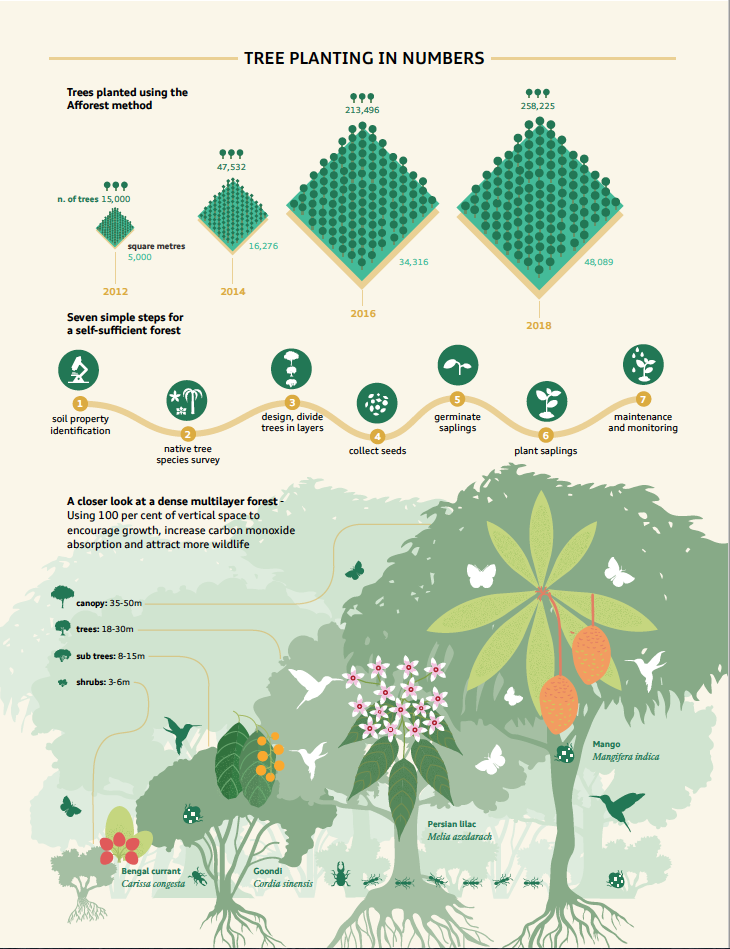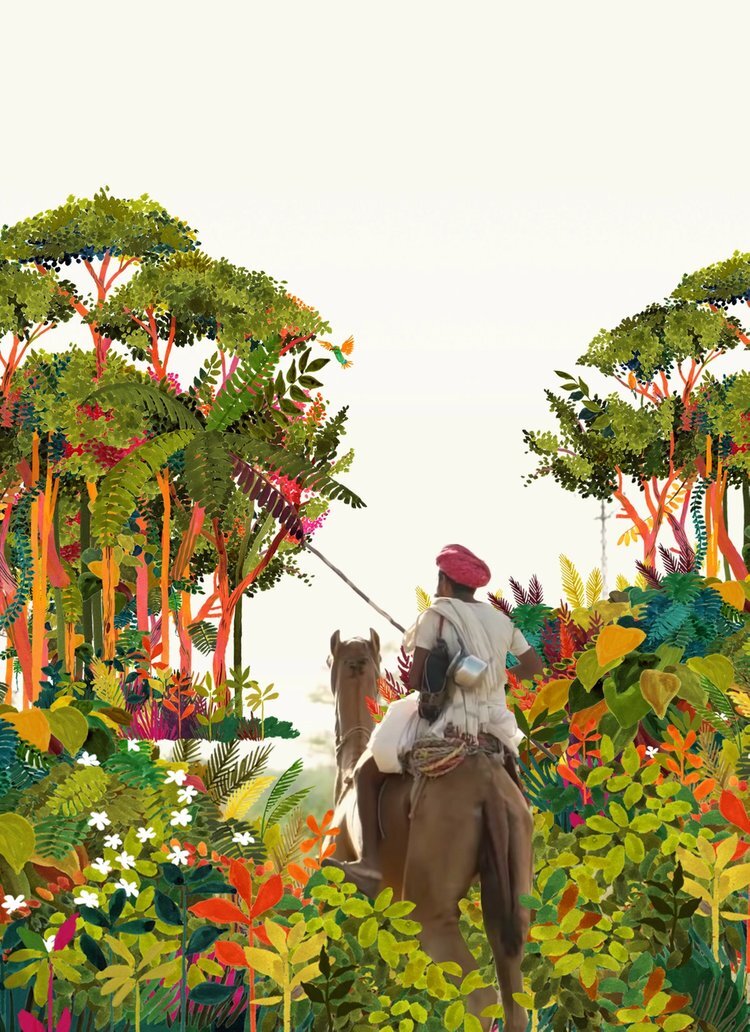Afforest - Growing Urban Forests
At Grounded, our core mission is sustainability and it really breaks our heart when we read stories on the deforestation of the amazon or deforestation in Asia for Palm oil production. Recently, we came across this article on a brilliant organization, Afforestt and its efforts to create urban forests. Afforestt is based in Bangalore, founded by Shubhendu Sharma and has done consulting work in several countries. They follow a method for afforestation pioneered by a Japanese botanist, Dr. Akira Miyawaki. We got so into the idea that we did a bit more research and have put together a short summary of our findings below.
Research done by Maryam Sheikh, Junior Architect at Grounded.
Edited by Roshini Ganesh, Communications at Grounded.
THE MIYAWAKI METHOD OF AFFORESTATION
The Miyawaki method is a global – local practice of afforestation pioneered by a Japanese botanist, Dr Akira Miyawaki. Dedicated to the protection and regeneration of forests, it places emphasis on the value and contribution of native species to the environment as well as the social fabric that thrives around it. It educates us on how real forests are made up of multi-layered native trees, and that such forests stay firm when subjected to natural disasters.
With increased and widespread deforestation and forest wildfires, it becomes paramount that efficient solutions also flood the world. Disasters such as the Australian bushfires and the unprecedented Amazon rainforest fires have jolted the world awake and into action mode. Yet for those who truly care about climate action, we have systems that have long been working towards protecting the environment without the need of an emergency to spring into action.
The Miyawaki method makes strides by enabling the creation of micro, mini and mega forests using the same core principles. It gives us layered and more variegated habitats that are dependent on local flora and fauna. It is important to note that it is this consideration of native species that sets this method apart, and not the way of placement.
The following are the steps to realize this ingenious method:
First, the soil is prepared by adding a combination of materials that allow for perforation and water retention. Naturally available resources such as rice husk, wheat husk, peanut shells, and corn cobs perforate the soil and make room for the plant roots to grow quickly. Water retainers like coco peat and sugarcane stalk increase the soil’s water retention capacity. To complete the preparation, nourishing mixtures like manure and vermicompost are added to the composition to create a nutrient rich environment for the saplings.
Next, the land is surveyed to identify native species that are best suited for plantation together. Not everything that grows in a space belongs there - it is therefore important to look through the historical records of that region in order to understand what is really native. The local plant species are categorized into 4 layers:
Shrubs – those that grow up to 6 feet (1.8m)
Sub-trees – that grow up to 25 feet (7.6m)
Trees – that grow up to 40 feet (12 m)
Canopy trees – that grow above 40 feet
The saplings are introduced at a stage when they have grown to a height of 24-32 inches (0.6-0.8m) above the ground.
3. The design and arrangement of the forest belt is the next step. The more staggered the species are, the better it is for the forest. These various indigenous trees are planted close to each other with an average of 3-5 saplings accommodated in every square meter. Contrary to most myths, the saplings will not fight for nutrition, but learn to survive in a co-dependent manner. The plants work in harmony to create strong root networks underground that allow them to interact with each other and share nutrition between species. This also reduces the depletion of soil nutrition, and erosion over time.
4. Once the saplings are planted, the soil needs to be layered with a thick layer of mulch that acts as a soil insulator to ensure the moisture within remains intact and does not evaporate. To safeguard the upcoming forest saplings against weeds, the land requires maintenance for the first 2 years, after which the mantra becomes– “No management is the best management”.
The density of these tight-as-a-fist forests creates a diverse natural habitat above ground that invites varied biodiversity over time. It also creates a steady nexus of root clusters below ground that stay strong and hold ground when faced with natural calamities like storms, floods, tsunamis as well as man-made adversities like deforestation.
The Miyawaki method was first brought to India in 2009 and has been adopted by Afforest – a social enterprise founded by a humble engineer and environment saviour, Shubendu Sharma.
His sincere effort to spread the technique has already touched ground in 50 cities across the globe empowering people with information on how to grow a forest, starting with their own backyards. His studies illustrate the exponential benefits of growing a multi-layered forest vs a monoculture forest to create a habitat that is 100 times more bio diverse, is 100% natural, allows for 30 times more groundwater recharge and soil conservation, among many others.
Many homegrown organisations like Afforest, Thuvakkam (Chennai), and SayTrees (Bengaluru) use the Miyawaki method in afforestation throughout India. Afforest has planted 4.5 lakhs trees across their 108 projects; ninety of these sites are located in India. Say Trees engages with citizens and corporates, and has helped plant 70,000 trees in Bengaluru from 2008.
Adjacent to the Manyata Tech Park, five mini forests have been planted by a team of 15 citizens, spread across 7850 sq m. All of these have been created by the residents of Manyata Residency nearby in close collaboration with Say Trees.
Other organisations such as the Sugi Project take the concept of re-wilding urban land door to door and empower everyday citizens to invest in nature and restore biodiversity. Their ongoing project at Maruvan with Afforest takes the Miyawaki idea many steps forward, envisioning a nursery, a tree seed bank, and a forest on presently arid desert terrain. These forests create a natural native green lung, bring alive degraded land, offset the carbon footprint, and build community.
Afforestation through the Miyawaki method enlivens the land as well as the very idea of plantation. It arms us with the ability to make the dream of living near a forest, a reality – provided we create one. It gives us the opportunity to take responsibility for better natural systems, to create space for biodiversity, and to create hope.














